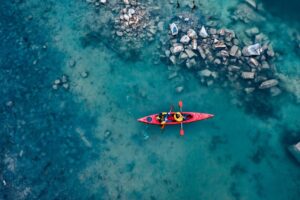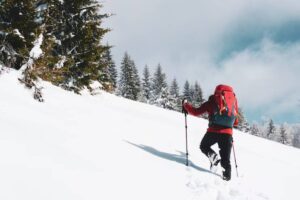The Travel Blog
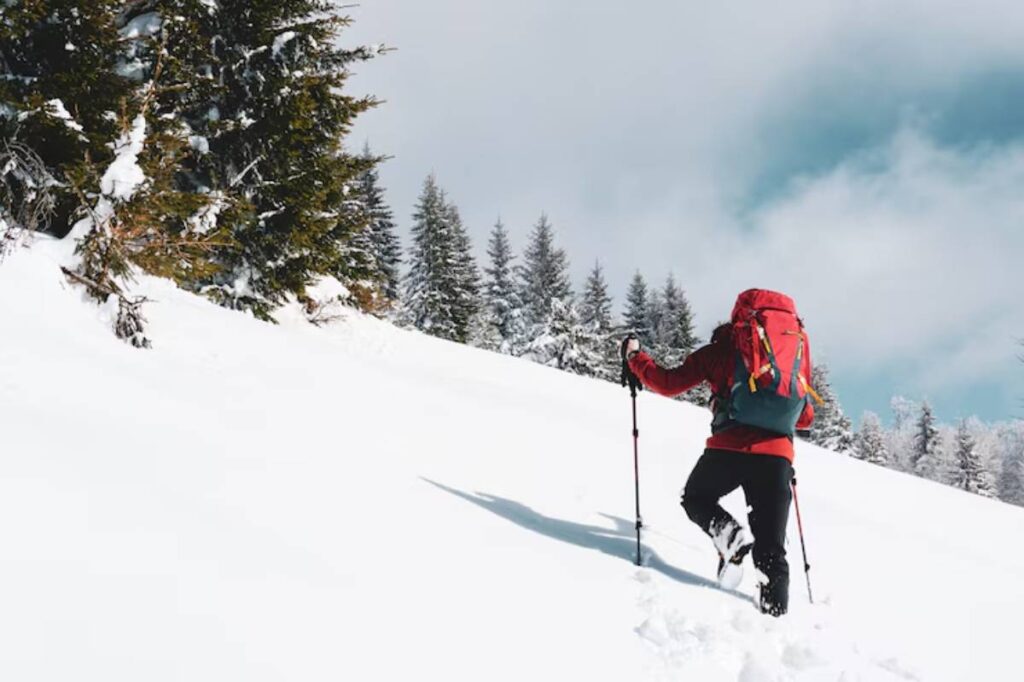
Ski Touring in the Swiss Alps: Backcountry Bliss
Where Powder Dreams Begin
There’s something undeniably magical about the Swiss Alps. It’s not just the jagged peaks or the crystalline snow — it’s the silence, the sense of scale, the thrill of carving your own path where no lift line exists. If you’ve ever craved untouched slopes, sweeping alpine views, and a challenge that rewards every muscle and breath, ski touring in the Swiss Alps might just be your calling.
This blog will guide you through everything you need to know to begin or elevate your alpine adventures, from safety tips and gear to the best regions for backcountry skiing in Europe. Plus, you’ll hear firsthand stories that bring the mountain spirit alive.
Why Choose the Swiss Alps for Ski Touring?
1. Iconic Terrain
- Home to legendary peaks like the Matterhorn, Eiger, and Jungfrau
- Varied elevations and technical levels
- Glacial routes, open bowls, forested descents
2. Reliable Snow and Infrastructure
- Consistent snowpack from December to April
- World-class avalanche forecasting and rescue services
- High-altitude mountain huts for multiday tours
3. Culture and Charm
- Picture-perfect Alpine villages
- Après-ski done the Swiss way (cheese fondue, anyone?)
- Blend of French, German, and Italian heritage
Top Regions for Ski Touring in Switzerland
Verbier and the Val de Bagnes
- Skill Level: Intermediate–Advanced
- Highlights: Col des Mines, Mont Rogneux
- Vibe: Popular with international freeriders
Aletsch Arena
- Skill Level: Beginner–Intermediate
- Highlights: Aletsch Glacier, Eggishorn climbs
- Vibe: Less crowded, epic panoramas
Davos and Klosters
- Skill Level: All levels
- Highlights: Pischa and Dischma valleys
- Vibe: Big terrain with good access and facilities
Bernese Oberland
- Skill Level: Advanced
- Highlights: Finsteraarhorn, Lötschenlücke
- Vibe: Remote, wild, and glaciated
What Is Ski Touring Exactly?
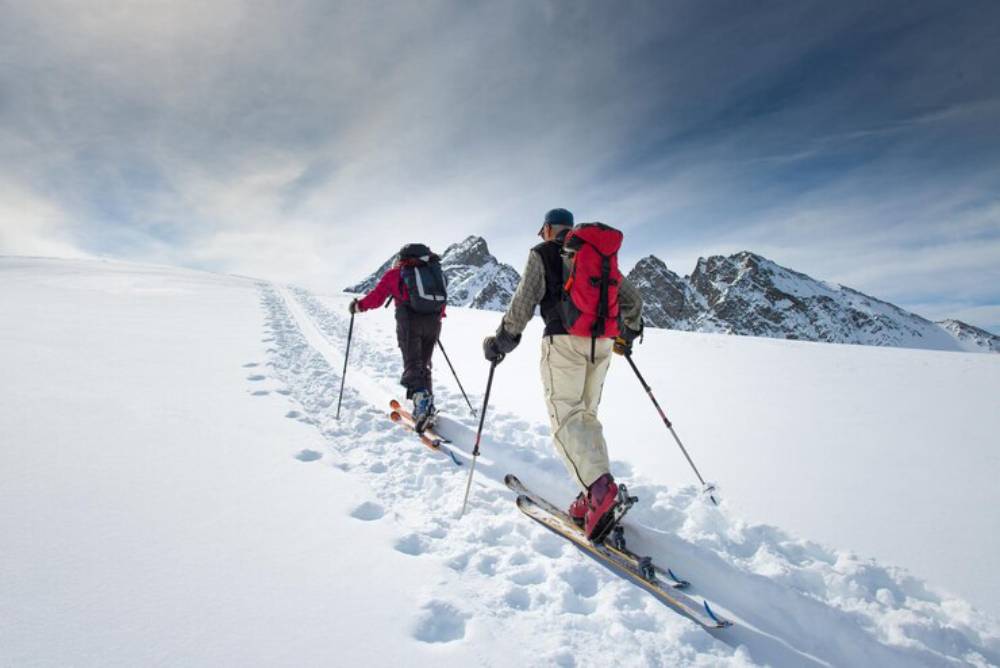
Ski touring (or alpine touring) is:
- Ascending mountains on skis using climbing skins
- Transitioning to downhill by removing skins and locking heels
- Independent travel in unpatrolled, ungroomed areas
It’s about self-reliance, mountain awareness, and the freedom to roam.
A Day in the Life of a Swiss Alps Tourer
Morning
- Wake at a mountain hut or a valley hotel
- Check avalanche forecasts
- Skin up as the sun rises over alpine ridges
Midday
- Summit a peak
- Enjoy views with hot tea or a cheese sandwich
- Strip skins and prepare for descent
Afternoon
- Ski untouched powder back down
- Laugh with your group
- Refuel at a rustic mountain hut
What You’ll Need: Gear Guide
Touring Equipment
- Alpine touring skis with pin bindings
- Climbing skins
- Adjustable poles
- Touring boots (lightweight, walk mode)
- Avalanche transceiver, probe, and shovel
- Helmet and goggles
- Backpack with hydration system
Clothing
- Base layer (merino or synthetic)
- Mid layer (fleece or light down)
- Waterproof outer shell
- Gloves, buff, beanie, sunglasses
- Extra layers in the backpack
Need packing advice? Read How to Pack for Multi-Climate Adventure Trips
Skills You Should Have
- Basic skiing competence (can handle red/black runs)
- Good physical conditioning
- Avalanche safety training
- Ability to use a map/GPS or follow a guide
Safety Essentials
- Always check avalanche reports at SLF.ch
- Carry safety gear and know how to use it
- Book a guide for unfamiliar routes
- Leave a plan with someone before heading out
Anecdote: My First Ski Tour in Aletsch
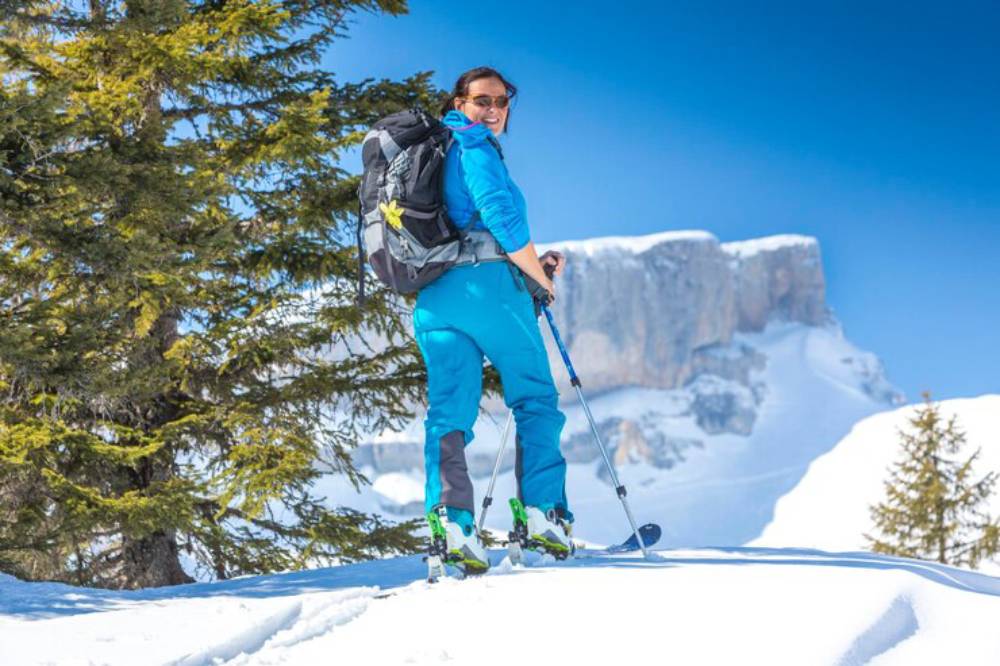
It was 6 am. We hiked in silence, each breath misting in moonlight. The snow underfoot sparkled like frost-dusted velvet. Hours later, I stood atop Eggishorn, my legs aching, heart pounding. Below me: an untouched descent into silence. I dropped in. One turn. Then another. And suddenly, I was flying.
When to Go
| Month | Conditions | Notes |
|---|---|---|
| Dec–Jan | Cold, early snow | Short days, good for huts |
| Feb–Mar | Prime time | Great powder, longer light |
| Apr | Corn snow, sunny | Best for high-altitude glacier tours |
Where to Stay
- Cabane de Valsorey – For Haute Route tours
- Berggasthaus Aescher – Rustic with views
- Verbier hostels – Budget-friendly for tourists
- Swiss Alpine Club (SAC) huts – Great network, book ahead
Responsible Touring
- Stay on approved routes
- Avoid wildlife zones
- Don’t cut fresh tracks in avalanche-prone areas
- Respect other tourists and nature
Learn more in How to Stay Safe During Extreme Sports Activities
Combining Ski Touring with Other Adventures
- Glacier hiking
- Ice climbing
- Snowshoeing on rest days
- Cheese/wine tours in alpine towns
Tips for Beginners
- Hire a certified mountain guide
- Start with low-angle terrain
- Practice transitions (skins off/on, boots mode change)
- Learn to use an avalanche beacon and a probe
- Don’t tour alone
Photography Tips in the Backcountry
- Use a weatherproof camera or case
- Shoot during golden hours (early/late)
- Include your group for scale
- Avoid stopping in avalanche-prone areas
Emotional Payoff: Why Ski Touring Matters
There’s a difference between riding a lift and earning your descent. Ski touring is a meditation in motion — each step upward is a reminder of your strength, and each turn is a gift from the mountain. You learn patience, humility, joy, and respect for nature’s quiet power.
Ski Touring and Swiss Alpine Culture: More Than Just Mountains
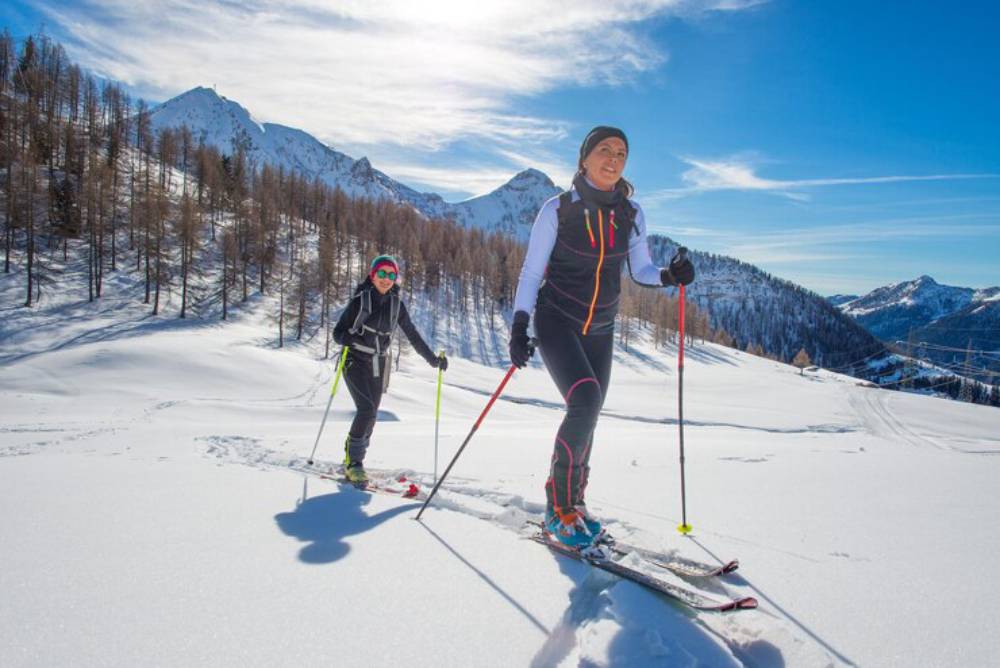
Beyond the powder and peaks, ski touring in Switzerland offers a deep connection to the country’s alpine culture — a way of life shaped by centuries of mountain resilience.
Meet the Guardians of the Alps: Hut Wardens and Local Guides
In many remote huts, you’ll be welcomed by hüttenwart — local wardens who maintain these sanctuaries year-round. They serve hearty meals like rösti, alpine cheese, and homemade soup, often sharing stories of avalanches, rescues, and wildlife sightings.
Swiss mountain guides, many IFMGA-certified, often hail from generations of climbers and ski pioneers. Booking with a local guide doesn’t just ensure safety — it’s a doorway into a rich oral tradition of alpine knowledge and terrain secrets.
A Taste of the Mountains: Food on Tour
Fueling up in the Alps is part of the experience.
Some huts offer traditional meals:
- Älplermagronen (alpine mac and cheese with potatoes)
- Salsiz (dry-cured sausages)
- Birnbrot (fruit-and-nut bread perfect for pocket snacks)
Bring local snacks for the trail — Swiss chocolate tastes even better at 2,000 metres.
Environmental Legacy: Touring the Alps Responsibly
Switzerland is leading in sustainable alpine tourism. When ski touring here, you become part of that stewardship.
- Stick to marked ski touring zones to avoid disturbing wintering wildlife
- Use huts that run on solar energy or snowmelt systems
- Choose gear and clothing from eco-certified brands
Even your tracks matter — avoid unnecessary traverses in fragile snowpack or young tree zones.
Conclusion: Breathe In. Ski Out.
Ski touring in the Swiss Alps is more than a sport — it’s a communion with winter. Whether you crave solitude, untouched powder, or the satisfaction of a summit earned, this is the kind of experience that stays with you long after the snow has melted.
Ready to Explore the Backcountry?
Book a guided ski tour and start your alpine journey today. Share your touring stories or questions below. Subscribe for more tips on backcountry skiing in Europe and thrilling alpine adventures.




